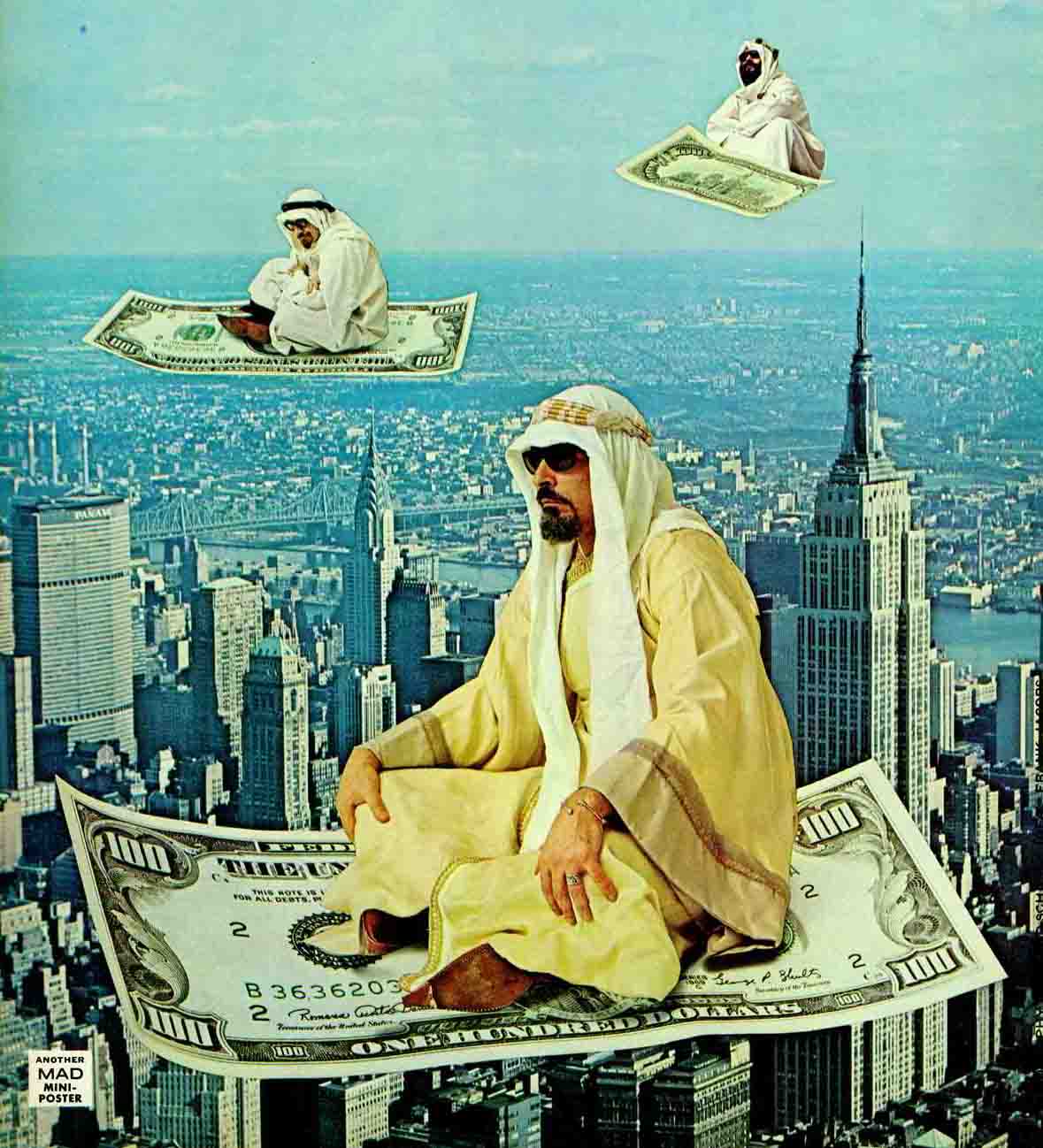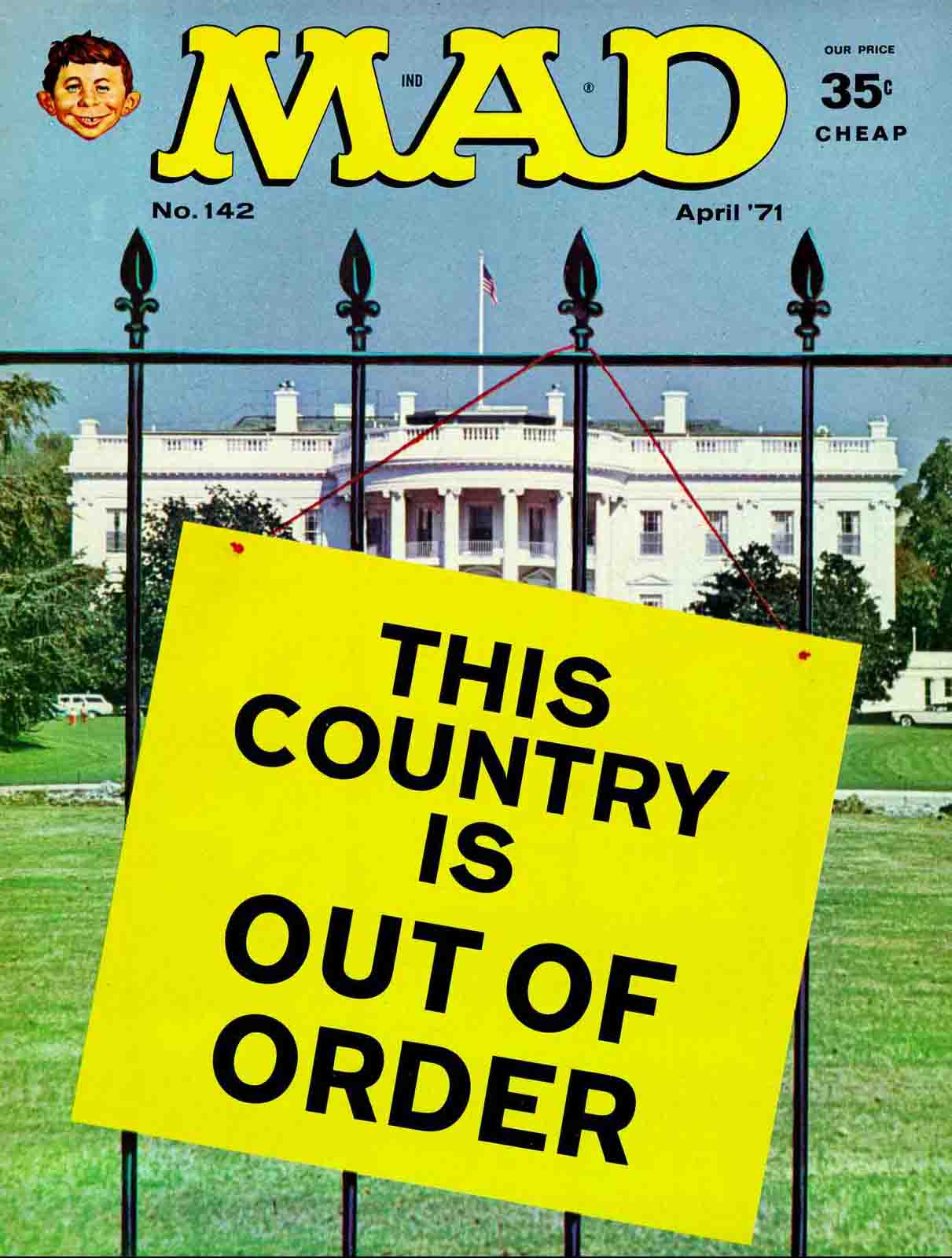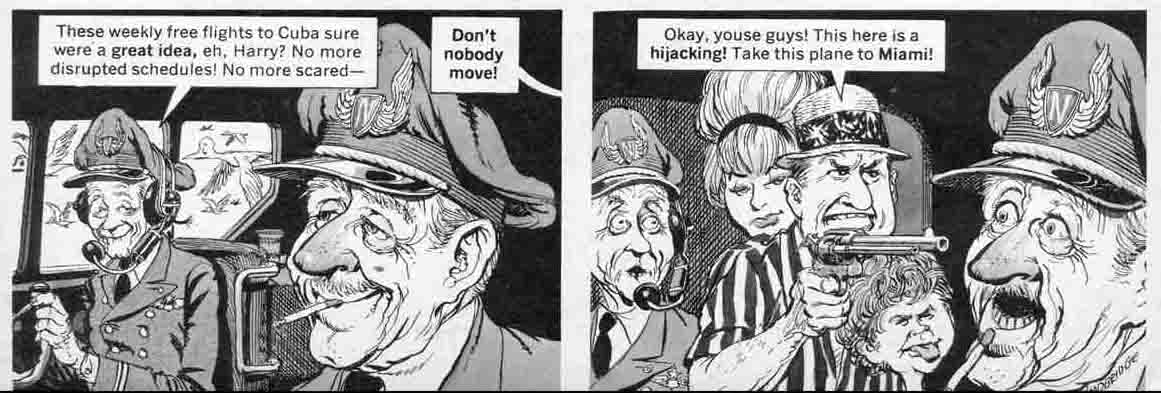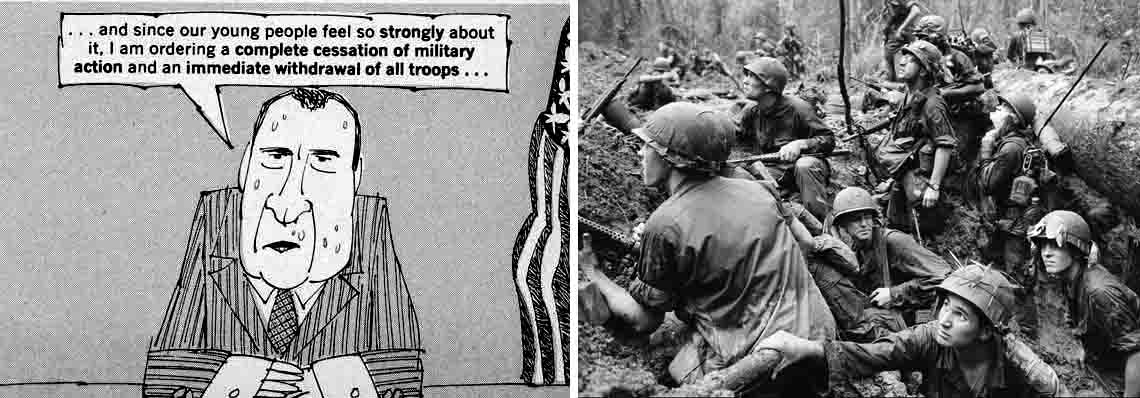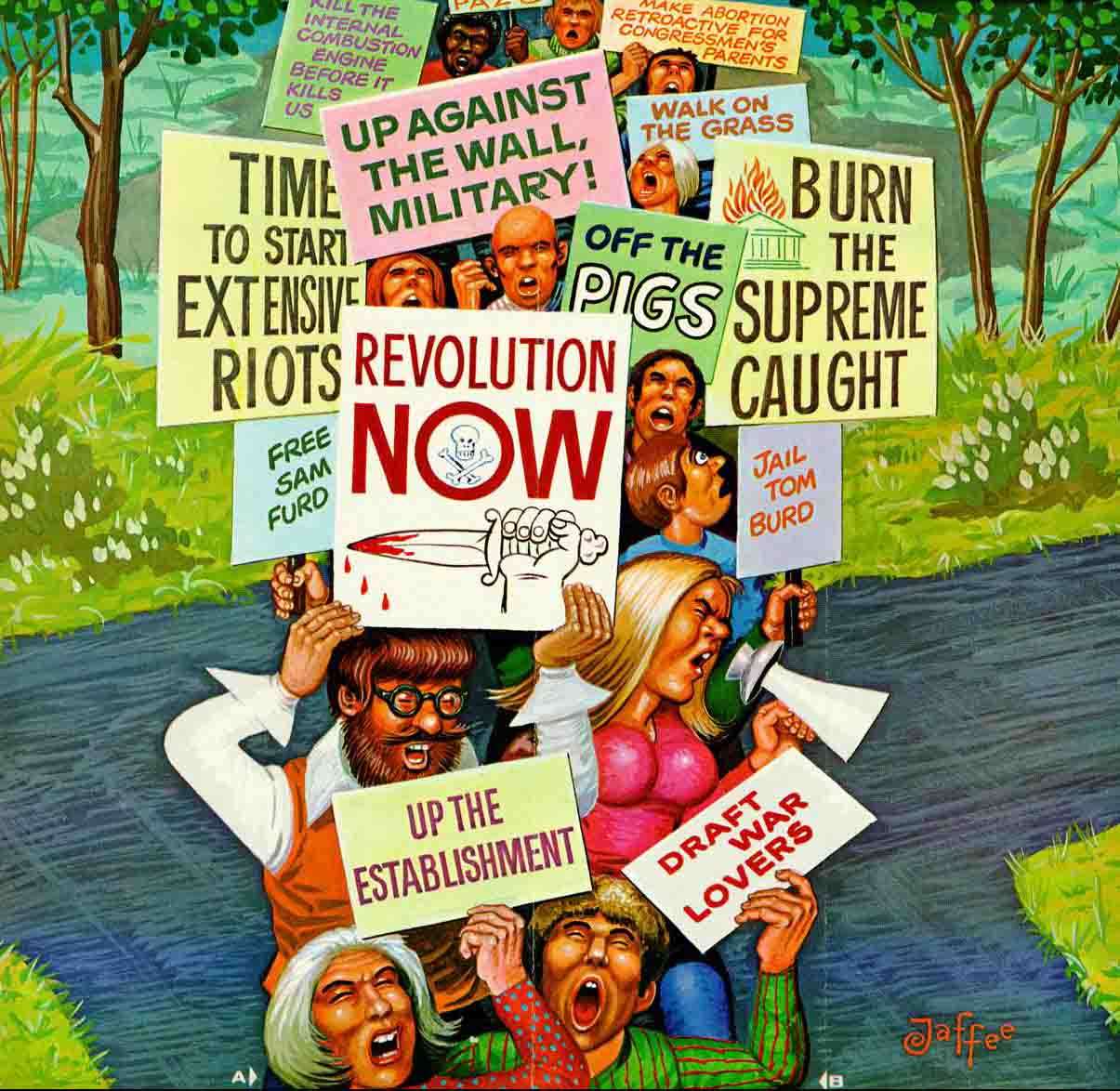Every decade has its share of fears – whether it’s the Red Scare or Global Warming, no decade is exempt from having a healthy supply of things to get worried about. In this regard, the decade of the 1970s far exceeded its quota. Here are 8 crises and massive anxieties that swept through the decade. I am sure you can name many more – and please do! (I’ve included images from humor magazines of the times to perhaps soften the mood.)
-
The Oil Crisis
America (and a handful of other nations) had helped Israel in the Yom Kippur War and now the Arabs were, naturally, pissed. So, they banded together via OPEC and hiked oil prices, delivering an economic bitch slap to the U.S. Almost overnight, oil prices QUADRUPLED…. Yes, you read that right.
Add to this problem, there became a shortage – with 20% of gas stations completely sold out in 1974. This scarcity led to government enforced rationing – for instance, you could only fuel-up on certain days according to your license plate number. The rationing actually led to incidents of violence and fair degree of panic among the population. Truckers, who obviously rely on fuel to earn a living, were none too pleased. Strikes ensued.
As you’d expect, the days of the gas guzzling car were over. Economy cars suddenly found their way into American driveways. Plus, the speed limit was reduced to 55 mph (the dreaded “double nickel” to truckers, who were once again burned by the oil crisis).
And just as people were starting to become acclimated to the situation, 1979 brought another wave of panic. Everyone remembers the “evil” Ayatollah Khomeini, the Iranian madman responsible for decreases in oil production. The result: gas lines that could take hours, and massive panic over soaring prices. This time, Americans were more skeptical, with a widespread belief that gas crisis was a hoax created by the oil companies. To say that tensions were high would be a severe understatement.
Insanely long gas lines, oil rationing, reduced speed limits, car size reductions, and an override sense of worry that one day gasoline will either be completely unaffordable or completely unavailable – all of this adds up to a massive change in, not only American car culture, but an overall life change for most Americans.
-
Nuclear Annihilation
When you think of the Atomic Scare, you think of 1950s and 1960s – kids crouched under their school desks in nuclear attack drills. Yet, the Cold War was still in full effect in the 70s (and 80s for that matter). You could even argue, due to increases in nuclear capabilities, things were poised for mutually assured destruction more than ever before.
-
Racial Upheaval
The 1960s had brought its share of progress; unfortunately, it didn’t come easily. Lives were lost and rioting was commonplace. By the time the 1970s rolled around, tensions were still thick. Can your mind even comprehend seeing on your television news a troupe black men bearing fully automatic weaponry declaring war on the white man? That’s exactly what occurred. Today, we’d probably initiate drone attacks. But in the 70s, it just blended in with the cornucopia of unrest.
-
Political Implosion
Baby Boomers look upon the Kennedy years as Camelot because it was a time when the American population still retained some trust in their political leaders. Vietnam (which actually had its beginnings during JFK’s tenure) began to shatter any remnants of trust. Watergate and the Pentagon Papers then shat upon its tattered remains.
Little did we know Nixon actually was purposefully sabotaging peace talks in Paris between North and South Vietnam for political leverage. Tricky Dick did a lot more than just wiretapping – just ask a Cambodian.
-
Fiscal Crisis
The Boomers got the benefit of a massive spike in the 1980s, getting some serious returns on investments. The “Me Generation” was rolling in dough under Reagan, Bush and Clinton, quickly jettisoning their hippie anti-materialistic mantra in favor of stacks of cash. However, it was a different story in the 70s (and early 80s) – can you even imagine having a interest rate on your house exceed 13%?
For the first time, America couldn’t pay its bills and Dick Nixon followed Europe’s lead and eliminated the gold standard. Naturally, inflation skyrocketed. Post-WWII America had prospered at an unheard of level, and we enjoyed all the good things that came with it – low unemployment, low debt, and a quality of life that was the envy of nations. Fast forward to the 1970s and that economic Utopia had all but washed away.
Of course, this was inextricably tied to the aforementioned oil crisis. The stock market crash of 1973-4 was a byproduct as was the 9% unemployment. It wasn’t as bad as the Great Depression, and the 2008 Recession was probably worse as well. However, after riding high after WWII, the fall seemed rather steep. Boomers who grew up in the Land of Plenty suddenly found themselves in much harsher economic climate.
-
Hijacking
The “Friendly Skies” weren’t so friendly in the 1970s. In fact, there was zero airport security until 1972 (they just checked your bags – nothing like today’s mania). To give you an idea of the increase: Between years 1958 and 1967 there was 48 hijackings. Between years 1968 and 1977 there was 414 hijackings. At one point, 4 planes were hijacked at once! Indeed, when you got on a plane in the 70s, chances were you’d either end up in Cuba or a hostage for the next week or so – best not to set any concrete plans.
-
Vietnam
What can be said about the conflict in South Asia? It not only cost thousands of lives, it utterly destroyed the patriotism that had been so deliberately instilled in previous decades. The trauma of seeing the daily carnage on the nightly news coupled with the horrific fear that you, your friends, your loved ones, your neighbors, etc. could be next, made for a psychologically scarring period in American history. The rapidly growing resentment over being there in the first place made things even more explosive. By mid-decade we were out of there, but the damage had been done.
-
The Crime Wave
We’ve covered the crime increase in detail on Flashbak before, so we’ll keep the description to a minimum. Suffice it to say, however you crunch the numbers, crime in the 1970s was appalling compared to previous decades. For instance, there were 17,190 forcible rapes in 1960, and the number jumps to 37,990 in 1970. Of course, there were other factors at work: a population increase (specifically ballooning at the age range where most rapes occur) and more reporting of sexual assaults.
So, the extent of the crime increase can be debated – whether there was one isn’t even up for discussion. Suddenly, life seemed a whole lot less safe. An extreme example of the surge was the rise in serial killers: There were 19 serial killers in the entire decade of the 1960s… and then, 119 in the 1970s.
Suffice it to say, the world was a very different place than just a few short years prior.
Would you like to support Flashbak?
Please consider making a donation to our site. We don't want to rely on ads to bring you the best of visual culture. You can also support us by signing up to our Mailing List. And you can also follow us on Facebook, Instagram and Twitter. For great art and culture delivered to your door, visit our shop.


